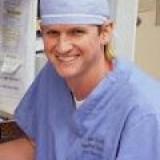In this innovative session, we delve into the complexities and collaborative efforts of cardiac surgery by offering a unique multi-camera view of the operating room. This session showcases the intricate interplay between the surgical team, including the surgeon, perfusionist, and anesthesiologist, during a cardiac procedure. By providing simultaneous visuals of the pump and operative field, the session aims to enhance understanding and communication among the various professionals involved in cardiac surgery.
The session employs a sophisticated multi-camera setup to capture every critical aspect of the surgery. Cameras are strategically placed to offer comprehensive views of the operating room, including:
The video begins with an introduction to the setup, emphasizing the importance of the multi-camera view in understanding the dynamic environment of cardiac surgery. The audience is guided through the various components visible on the screen, including the hemodynamic monitor, the oxygenator, and the heart-lung machine.
Throughout the session, real-time interactions between the surgical team members are highlighted. The perfusionist and surgeon communicate frequently, ensuring that the perfusionist adjusts the heart-lung machine parameters in response to the surgical needs. This interaction is crucial for maintaining the patient's stability during the procedure.
The session begins with the surgeon preparing the operative field and the perfusionist setting up the heart-lung machine. The hemodynamic monitor is displayed prominently, showing baseline readings and ensuring all systems are functioning correctly before the incision.
The video then transitions to the critical phase of going on cardiopulmonary bypass. This involves:
Throughout this phase, the hemodynamic monitor provides continuous feedback on the patient's status, and the perfusionist adjusts the flow and pressure as needed. The video captures the heart shrinking as it empties, indicating a successful transition to bypass.
With the heart-lung machine maintaining circulation, the surgeon performs the necessary cardiac procedure. The multi-camera setup captures the following key moments:
During the procedure, the video highlights the team's ability to manage complications effectively. For instance, if there is a leak around the cannulation site, the surgeon quickly addresses it while the perfusionist maintains stable circulation.
The final phase of the surgery involves gradually weaning the patient off the heart-lung machine. This process includes:
The session not only provides a comprehensive overview of cardiac surgery but also emphasizes the importance of teamwork and communication. By showing the entire process from multiple perspectives, the video serves as an invaluable educational tool for medical professionals, particularly those in training.
Throughout the session, feedback from viewers is encouraged, with opportunities for live questions and interactions. This real-time engagement allows for clarification of complex concepts and fosters a deeper understanding of the surgical process.
"Pump and Operative Field Shown Simultaneously" is a groundbreaking educational resource that bridges the gap between theory and practice in cardiac surgery. By offering an immersive, multi-angle view of the operating room, this session provides a holistic understanding of the roles and responsibilities of each team member during a cardiac procedure. This innovative approach not only enhances learning but also promotes better communication and coordination among surgical teams, ultimately improving patient outcomes.

Dr. Mark Mettauer, MD is a cardiac surgery specialist in The Woodlands, TX and has been practicing for 25 years. He specializes in cardiac surgery and thoracic surgery